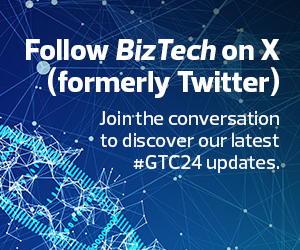Automating Back-Office Work and Boosting Labor Productivity
“On average, an employee spends 30 percent of their time on manual IT work,” said Chris Bedi, chief digital information officer at ServiceNow. “Gen AI is now cutting down that process. What we saw on the back end was a 14 percent reduction in that back-office work.”
Augmenting workflows allows employees to reallocate those hours to more impactful work. And IT leadership can put resources toward upskilling and training staff so that everyone in the organization achieves a working proficiency with AI tools.
Enhancing the Omnichannel Experience for Customers and Associates
Generative AI is also helping businesses bridge the divide between the digital and physical worlds so that there is almost no gap between what products a consumer sees in-store versus online. For example, Lowe’s digital twin — connected through NVIDIA’s Omniverse — enables store associates to visualize and interact with nearly all of the chain’s digital data, “giving them superpowers” to optimize operations and localize plans to better meet customer needs, said Seemantini Godbole, executive vice president and chief digital and information officer at Lowe’s. The digital twin also lets teams test and virtually simulate hundreds of different store layouts and product pairings so that IT leaders can compare “this planogram versus this planogram, what would it do to my sales what would it do to my inventory flow,” said Godbole.
READ MORE: Learn the four most effective use cases of generative AI in retail.
The Fortune 50 home improvement company is also using AI analytics to drive e-commerce personalization and computer vision technology to improve inventory tracking and reduce friction at self-checkout.
Businesses such as Amazon, Target and Walmart are also using generative AI to create more precise product recommendations and more personalized e-commerce texts and emails.
Accelerating Product Design and Development
From cars to cosmetics, generative AI is accelerating the product design process. In the automotive industry, teams are inputting parameters and constraints to test a wide range of designs, optimizing for factors such as aerodynamics, safety and aesthetics. This approach enables faster iteration and discovery, reducing the time and cost associated with developing new models.
Text-to-image sourcing is also allowing teams to rapidly prototype products and marketing packages, explained Dora Li, senior solutions architect for retail at NVIDIA. Just input a prompt like “poppies on ice" into GenAI (as Li demonstrated in her session) and several images populate—saving businesses days of photoshoot resources.
RELATED: Oracle Red Bull Racing uses artificial intelligence to dominate Formula One.
“We’re not talking about just giving somebody an AI assistant to work a little bit faster. The tool is now starting to redesign the product,” said Dan Diasio, global artificial intelligence leader at EY Consulting.
The challenge with these shortcuts is making sure that the visuals are copyrighted for wide use and distribution, noted Andrea Gagliano, head of data science, AI/ML at Getty Images. There are also ethical considerations around falsifying aesthetics too much. L’Oréal Group has set guidelines for stating that they will only use generative AI tools for creative inspiration, said Asmita Dubey, chief digital and marketing officer at the company.
The Next Phase of Generative AI
The next phase of generative AI will involve top-down business transformation on a much larger scale. SentinelOne CIO Sandy Venugopal said that this means businesses are “a little more efficient or a little more automated, which is how we started.” Eventually, however, the process will require rethinking from the ground up with new capabilities.
But many businesses aren’t there yet. “AI is being applied incrementally,” said Diasio. “People are just bolting it on to the existing way of working and making things 10 or 15 percent faster as opposed to redesigning the way work happens.”
UP NEXT: Learn how to build a successful generative AI platform.
Others are still stuck in the pilot phase and “need to get to the finish line of production,” Bedi said. Only then can IT leaders see cross-functional use cases with maximum ROI across the business.
“That’s the shift that companies will need to go through,” Diasio said, “from everything as a co-pilot to rebuilding those processes and becoming AI-native.”
Keep this page bookmarked for articles from the event and follow us on X (formerly Twitter) at @BizTechMagazine and the official conference feed, @NVIDIAGTC. The official conference hashtag is #GTC24.















